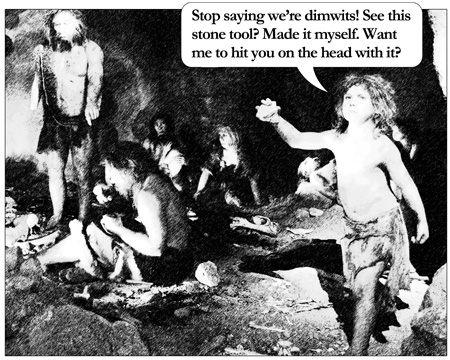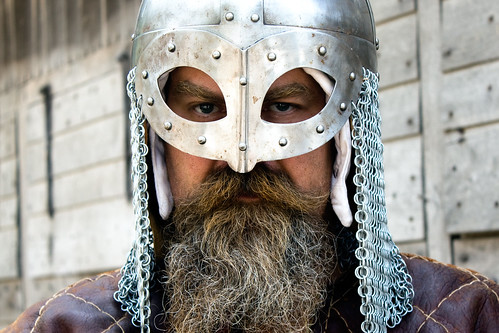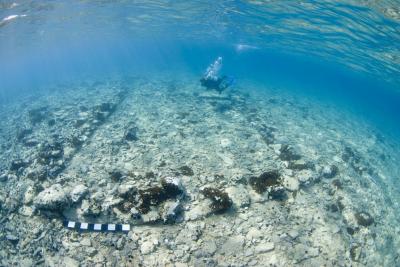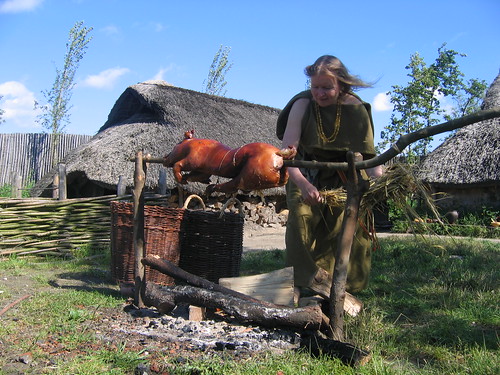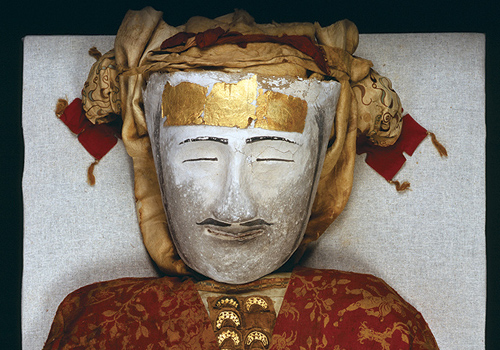The links between the Stonehenge area and the Mediterranean have been debated for years. Recent research suggest that some of the people buried in the area duringthe Bronze Age were not local. Rather, they came from both the snow of the Alps and the heat of the Mediterranean to visit Stonehenge. The analysis of the teeth from two males provides new evidence that one dubbed the Boy with the Amber necklace had come from the Mediterranean area, whilst it confirms the Amesbury Archer had come from the Alps. The Amesbury Archer was discovered around five kilometres from Stonehenge. His is…
-
-
A dig in search of Anglo-Saxon skeletons has instead unearthed signs of a sprawling Roman settlement. The discovery was made last week, on the grounds of Cambridge’s Newnham College. Evidence of a 16th or 17th century farmhouse that could date back to the reign of Henry VIII was unearthed at the site as well. “We knew there was a Roman settlement here before but we had no idea of the size,” said Dr Catherine Hills. “The village has been buried under the gardens for nearly 2,000 years, and may have seen the Roman conquest of Britain and Boudicca’s revolt. The…
-
For decades scientists believed Neanderthals developed ‘modern’ tools and ornaments solely through contact with Homo sapiens, and it is often said that the cavemen weren’t able to adapt their hunting techniques to the changing climate quickly enough to prevent their extinction. A new study nowsuggests these sturdy ancients were well capable of innovating without our help, adding to the growing pool of evidence that Neanderthal man was not a primitive, clumbering caveman. Basically, I am rehabilitating neanderthals, explainsJulien Riel-Salvatore, assistant professor of anthropology at UC Denver. They were far more resourceful than we have given them credit for. Uluzzian Innovation…
-
Archaeologists have discovered two ancient temples – over 4000 years old – in Peru’s northern jungle. If the preliminary dating is correct, this is the country’s oldest temple building found so far. The temples were found near the village of Jaén, Cajamarca, in northern Peru. The excavation sites (image slideshow), locally known as Monte Grande and San Isidro, were previously used for agriculture and even as a rubbish dump. The Excavations at the Monte Grande and San Isidro Temples The complex appears to have been built around 2,000 BC. According to Peruvian archaeologist Quirino Olivera, the temples can be associated…
-
The biblical narrative of the crossing of the Red Sea has inspired and mystified people for millennia. So far, Archeologists and Egyptologists have found little direct evidence to substantiate many of the events described in Exodus, said to have taken place more than 3,000 years ago. Now, a new study offers a new hydrodynamic explanation for the miracle a strong east wind, blowing overnight, could have created a land bridge (watch the video) and allowed for passage. By pinpointing a possible site south of the Mediterranean Sea for the crossing, the study – based on a reconstruction of the likely…
-
Archaeologists have discovered a 9th century Viking settlement at Annagassan, Ireland. The discovery is the culmination of a long term research project to identify the site of the Viking fortress of Linn Duchaill. It was long time suspected that the stronghold was to be found at Annagassan, County Louth, Ireland. The excavation of three trial trenches now confirms the results of a previous geophysical survey. A defensive rampart, consisting of a deep ditch and a bank was found. Likely, the fosse was the main fortification of the Norsemen‘s stronghold, which was further protected by the river Glide and the Irish…
-
Discovered over 40 years ago just off the coast of Greece, Pavlopetri is the oldest submerged city in the world and the only sunken city in Greece that predates the writing of Plato’s Atlantis myth. Now, for ‘Pavlopetri, The City Beneath the Waves’, BBC Two is to follow the team of experts excavating the submerged site. “The future of archaeology is under the water and we are now armed with the technology to unlock the countless fascinating secrets the sea is yet to yield up to us, says BBCTwo’s Janice Hadlow. The documentary is planned to air next year, and…
-
Evidence of early Iron Age settlements and Roman remains have found at Sutton borough, south London. The infant burials and animal remains uncovered across the site are believed to be over 2000 years old. The discoveries were made by workmen laying the foundations for the new Stanley Park High School on the former site of Queen Mary’s Hospital. The site lies less than 100m to the northwest of one of the largest 150m in diameter Late Bronze Age hilltop enclosures in southeast England, discovered in the early 20th century. The archaeological remains are typical of a late Iron Age and…
-
This Saturday, as part of the Iron Age Open Days, Cheshire celebrates the opening of its brand new prehistoric Roundhouse at Burwardsley. The replica Iron Age Roundhouse, built by Chris Park from Acorn Education, will act as a teaching aid helping to bring archaeology to life for children. The free event will include demonstrations of Iron Age techniques such as making fire, bread and Iron Age jewellery, with an opportunity to have a go yourself. Round Houses were the dominant building style of late prehistoric Britain and would have been common to Cheshire throughout the Iron Age. Archaeological remains of…
-
Tickets go on sale today for “Secrets of the Silk Road” a landmark exhibition from China making its only East Coast stop at the University of Pennsylvania Museum of Archaeology and Anthropology (Penn Museum) in Philadelphia February 5 through June 5, 2011. The exhibition aims to reflect the wide extent of the Silk Road trade and cultural interchange (see some of the highlights in this slideshow). Despite of what its name suggests, the Silk Road isn’t one single route. Rather, it is an extensive interconnected network of maritime and overland trade routes extending from Southern Europe through The Arabian Peninsula,…



